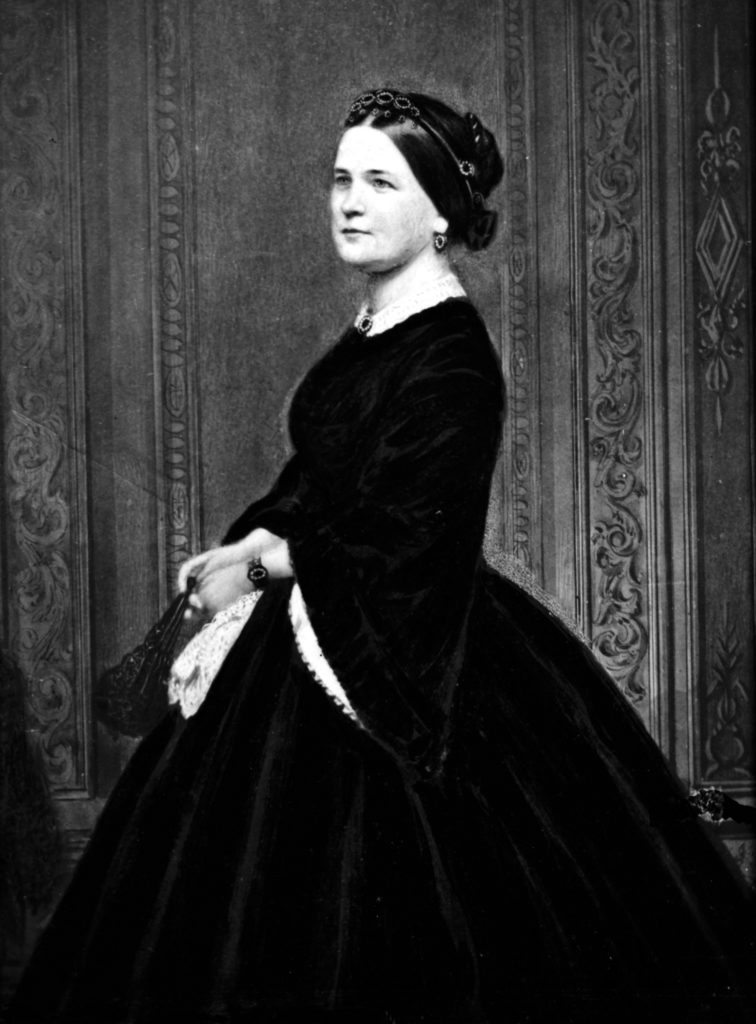
Germany as a haven after the Lincoln assassination
One of the lesser known aspects of the Lincoln assassination is the aftermath that played out in Germany. All the surviving occupants of the presidential box at Ford’s theater ended up moving to Germany. Mary Todd Lincoln and her son Tad lived in Frankfurt from 1868 to 1870, and Henry Rathbone moved to Hanover with his wife Clara and children in 1882 when the president appointed him U.S. Consul there. [Rathbone then became involved in a true crime himself. He murdered his wife a year later in Hanover – but that will be the subject of another post.]
I enjoy following the Lincoln and Rathbone sojourns in Germany because I live here, speak the language, and can research them. And that’s why a letter from Mary Todd Lincoln about a castle ghost caught my eye. There’s a possible mistake in there that’s leaked out into the biographical literature and I hope to point it out with this post.
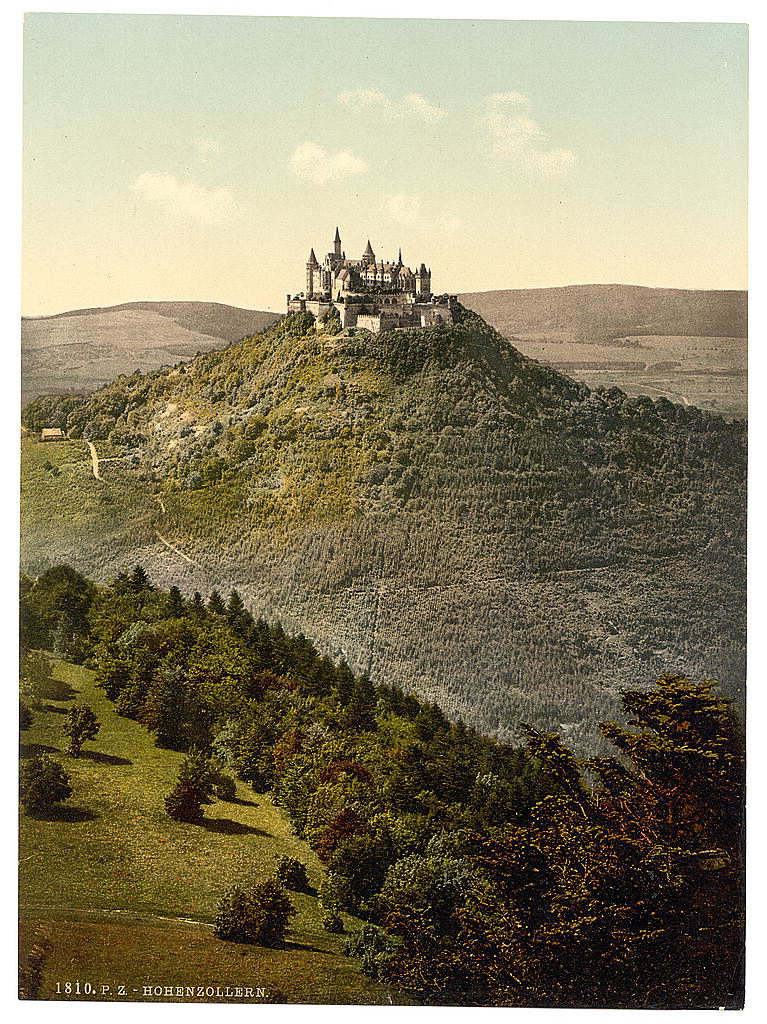
Mary Todd Lincoln in Germany
Mary stayed at the Hotel d’Angleterre in Frankfurt while Tad attended boarding school nearby. By February, Frankfurt had gotten too cold for her and she decided to travel to the Mediterranean. Along the way, she stopped at the spa town of Baden-Baden in the Rhine Valley. Once she reached Nice, France, Mary penned a letter to her friend Eliza Slataper, a member of the Lee family in Virginia:
En route to Nice, I stopped for a day or two at Baden to see a lady from America, who resides most of the time in Europe. We visited a castle near Baden, where the veritable “White Lady,” is said, delights most to dwell, and where Napoleon signed his memorable treaty, in roaming the immense building, I said to our two attendants “have you ever seen her” – to which, of course, they both replied – “We often do.” As you know, Germans are very superstitious, and from the King of Prussia, down to his humblest subject, believe in her frequent appearance.*

Mystery of Mary Todd Lincoln’s castle ghost
Who or what was Mary Lincoln’s castle ghost? And where was the castle the white lady haunted? The answer is elusive.
One biography identifies the castle as the Hohenzollern castle in the Province of Hohenzollern. The royal family of Hohenzollern fits nicely to the white lady story. Kunigunde von Orlmünde, a widowed mother, she was engaged to marry another member of the Hohenzollern family, but thought her children came between herself and her fiancé. So she stabbed her children’s skulls with a needle and killed them. Later she sought repentance in Rome and entered a convent, where she died in 1351. According to legend, her ghost appeared throughout history to various members of the Hohenzollern family before they died, including the King of Prussia. Thus, Mary’s mention of the king in her letter appears to be a reference to the white lady of the Hollenzollern dynasty.
But the Hohenzollern castle as the dwelling for Mary Todd Lincoln’s castle ghost presents some problems. Several Prussian castles, including Berlin, Kulmbach, Rudolstadt, and Bayreuth, belong to the white lady’s traditional haunts, but I can’t find a reference to her ever spooking the Hohenzollern castle itself.

Problem of distances
There’s yet another reason why Hohenzollern can’t be the home of Mary Todd Lincoln’s castle ghost. It’s too far away. Baden-Baden lies on the west side of the Black Forest. To travel from Baden-Baden, Mary would have had to cross or skirt the Black Forest mountain range from the Grand Duchy of Baden into the Kingdom of Wurttemberg, and from there cross the Neckar Valley to the east and travel up into the Prussian Province of Hohenzollern on the Swabian Alb plateau. That was 44 miles as the crow flies, but at least 68 miles on the road, and three different countries.
Mary and her friend couldn’t have saved time by travelling by train, either. The Zollenalb train line connecting Tübingen to Hechingen (the nearest town to the castle) didn’t open until June 29, 1869, several months later. The women would have had to have completed at least part of the trip by horse and carriage. The journey, then, would have been too long to fit in as a side trip during a one to two day visit to Baden-Baden.
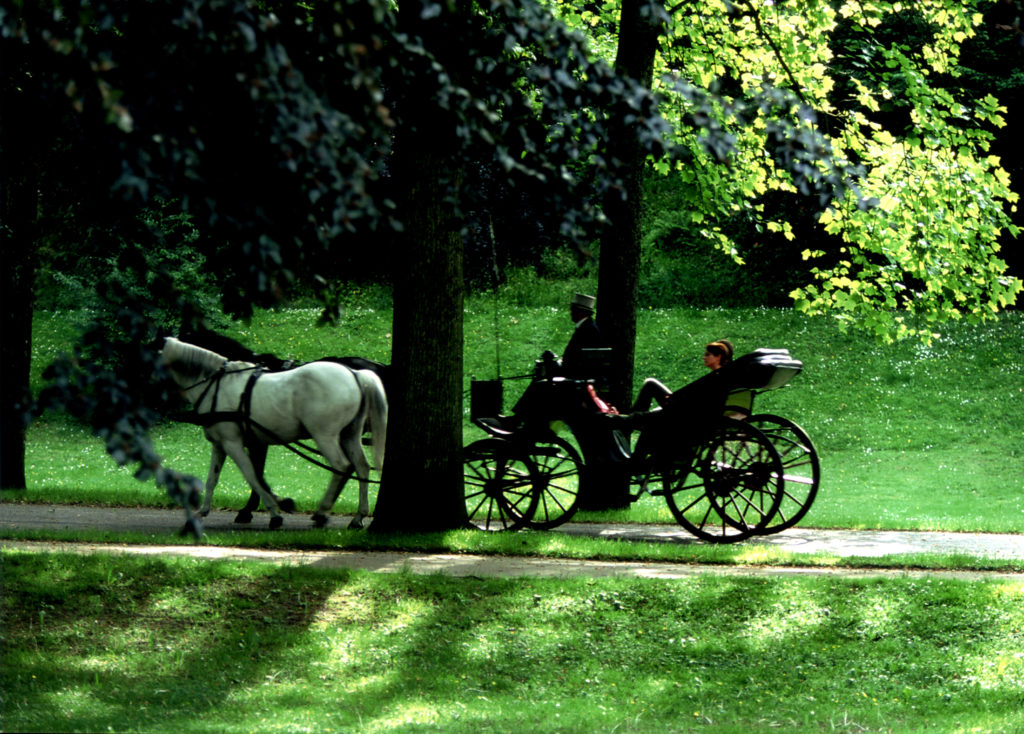
Napoleonic treaty riddle
Mary’s other clue, that Napoleon signed a treaty at the castle, doesn’t help either. Napoleon, as far as I can determine, never signed a treaty at the Hohenzollern castle nor at any other castle in southwestern Germany. Mary might have been confused on that point. Please correct me if I’m wrong and leave a comment if you know what Mary might mean by Napoleon’s castle treaty.
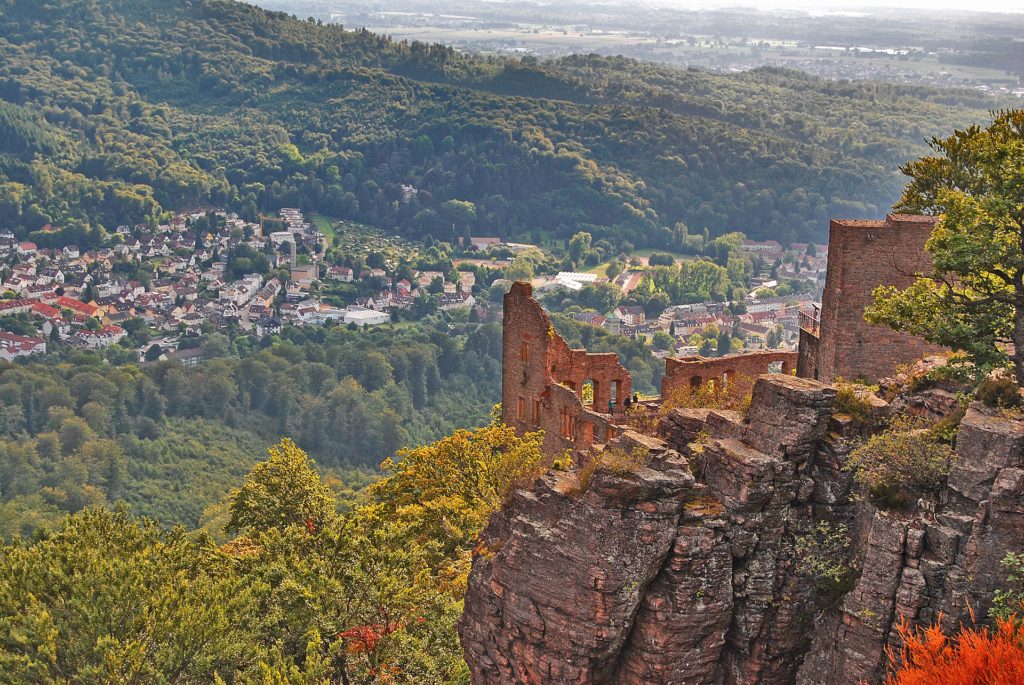
Hohenbaden castle and the gray lady
A prime location for Mary Todd Lincoln’s castle ghost would have been the Hohenbaden castle right next to Baden-Baden – one of the city’s major tourist attractions – and a very manageable side trip from town. The Hohenbaden castle doesn’t have a white lady, though. It has a gray one. And her story would have been far more intriguing to Mary Todd Lincoln.
The margravine who lived in the castle and became the gray lady after her death was a different kind of a mother than the white lady of the Hollenzollerns. By all accounts, she loved her baby son more than anything in the world. One evening, she wanted to show him his inheritance. She took him up a high tower and held him out over the balustrade to show him all the villages, fields, and farms over which he would one day rule. But he slipped out of her hands and tumbled down the castle walls and cliffs. Panicked, the margravine rushed down all the castle steps to search the ground below the cliffs. Although she had all her servants and maids help her, she never found her little boy’s body again. The margravine died in grief. Now, according to the Baden-Württemberg’s official website for its castles and gardens, she haunts the castle. You can still hear the margravine wailing as the wind whips the crevices in the cliffs, and at midnight, her gray-clad apparition drifts from room to room, her long white hair waving about her face.
Mary, who herself had two sons slip through her fingers into eternity, would have related much more to the mourning gray lady than the murderous white one. Might her memories of Edward and Willie have prompted her questions to her tour guides?
Gray lady in folklore
Although gray lady ghosts aren’t as common as the white ones, they do pop up in 19th-century literature. The gray lady of Caputh is another example, as is Maillais’s “Grey Lady” in Scotland. By 1846, a poem about the gray lady of Hohenbaden appeared in a collection of Baden legends. To give you a taste, I’ve translated the first four lines:
Habt ihr gehört von der grauen Frau
Im Bergschloß Hohenbaden?
Bethört von finstrer Macht, dem Gau
War sie zu Schreck und Schaden.**
Have you heard of the lady gray
In Hohenbaden’s cliffside palace?
Bewitched by darkness, she steals away
To spew her fright and malice.
The poem underscores the fame of the gray lady by the time Mary visited Baden-Baden in 1869. Today, the castle’s website describes the gray lady as the most famous of the castle’s legends. The ghost could have easily become a subject of the castle tours by the time Mary visited in 1869.
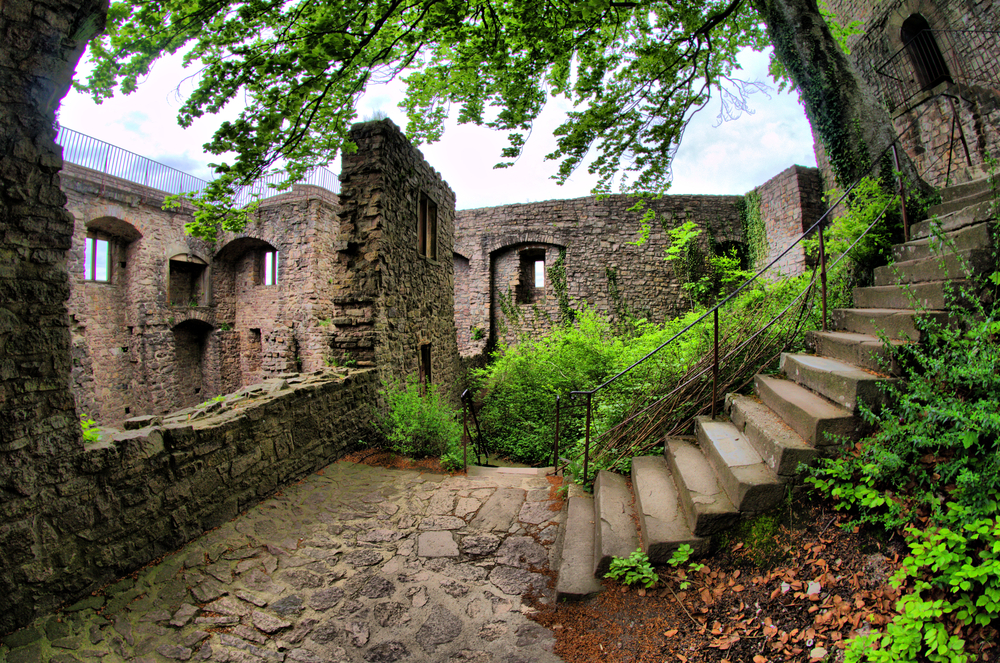
Hohenbaden as the better choice
It’s possible that Mary got the color of the ghosts mixed up by the time she reached Nice and wrote her letter. Even the names of the castles are quite similar, Hohenzollern and Hohenbaden. That might have confused her in any conversations or reading on the topic.
Nevertheless, the Hohenbaden castle, for its proximity to Baden-Baden and a ghost story that matches Mary’s letter, offers a far better alternative than Hohenzollern for Mary’s side trip destination and the haunt of Mary Todd Lincoln’s castle ghost.
The question of where she thought Napoleon signed his “memorable treaty” remains open and offers a way to solve the riddle of Mary’s destination. My cursory survey of the treaties Napoleon I and III signed didn’t turn up anything in a southwestern German castle. Knowledge, however, is a cumulative and cooperative effort, and perhaps a reader knows more about the topic than I do. Please leave a comment if you can contribute. In doing so, you’ll also augment Mary Todd Lincoln’s biography.
You might also enjoy reading about Mark Twain’s visit to Baden-Baden several years later and his encounter with the Prussian empress or two posts on Frederick the Great, a member of the Hohenzollern dynasty: How Frederick the Great’s Sword Helped Spark the Civil War and The Five Greatest Criminal Trials of History, which covers his judgment in the trial of the miller Arnold.
Literature on point:
Baden-Württemberg, Städtliche Schlösser und Gärten, “Ein Geist im alten Schloss: Die graue Frau,” Altes Schloss Hohenbaden.
Betty Boles Ellison, The True Mary Todd Lincoln: A Biography (Jefferson, NC: McFarland, 2014).
Jan von Flocken, “Die weiße Frau – ein Gespenst macht Geschichte,” Welt (Oct. 7, 2007).
**Ignaz Hub, “Die Graue Frau von Hohenbaden,” in Badisches Sagen-Buch II, August Schnezler, ed. (Karlsruhe: Creuzbacher & Kasper, 1846), 180-184.
*Mary Todd Lincoln to Eliza Slataper, Feb. 17, 1869 (in Turner, 26-27).
Literarisches Colloquium Berlin, “Die graue Frau,” Literatur Port (2015) [gray lady of Caputh].
Stephanie Graham Pina, “The Grey Lady,” Pre-Raphaelite Sisterhood (April 19, 2017).
Justin G. Turner, “The Mary Lincoln Letters to Mrs. Felician Slataper,” Journal of the Illinois State Historical Society 49(1):7-33 (Spring 1956).

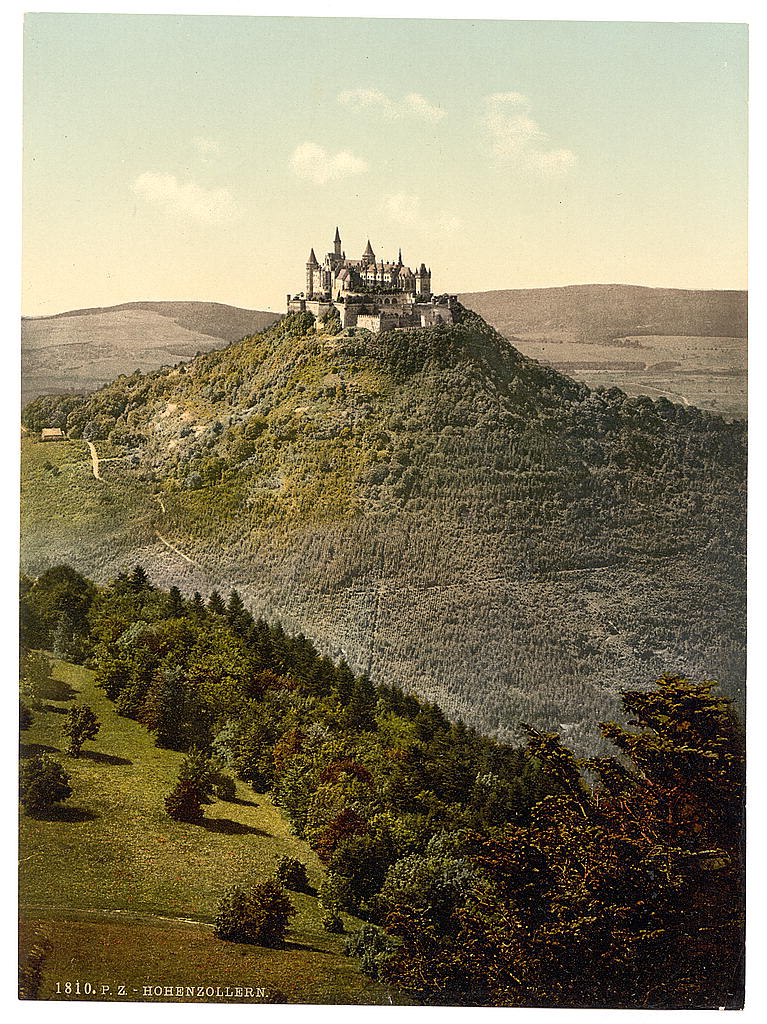


Do you know Shannon Selin on Twitter? She’s a Napoleonic researcher who might know more about this enigmatic “treaty.”
Thanks, Undine. In fact, I do know Shannon and asked her about it yesterday because I know she’s a Napoleon expert. She couldn’t think of any treaty either, but suggested I take a look at Napoleon III. I didn’t find anything there. It still remains a mystery.
Thank you for this fascinating article, Ann Marie. I had no idea Mrs. Lincoln moved to Germany after her husband’s assassination. I wish I could help identify the castle, but no relevant Napoleonic treaty comes to mind. I’ll share the post with the Napoleonic Historical Society to see if anyone there can assist.
Thanks, Shannon! If anyone could solve the treaty riddle in Mary Todd Lincoln’s letter, it would be someone from the Napoleonic Historical Society. I’m curious what kind of feedback we’ll get.
Great article Ann!
Thank you very much, Andy. I sure had fun researching and writing it. It’s not every day I go into ghost stories!
Fascinating article. Thank you
Thank you, Catherine! It was a fun post for me to research and write, so I’m glad that people are enjoying reading it. I just got some feedback from the Baden-Baden city archives today and hope to write a supplementary post in the future. I think we might be able to nail down which castle it was.
Very interesting piece.
Thanks, Marilyn!
May I ask where your information comes from that the president appointed Rathbone US Consul in Hannover? I did a thorough research sometime ago and couldn’t verify this:
http://rogerjnorton.com/LincolnDiscussionSymposium/thread-956-page-5.html?highlight=Consul
That’s a fascinating link, Eva. In short, I don’t recall what source I relied on. Although published sources (e.g. Wikipedia cites the Lincoln Assassination Encyclopedia, HarperCollins, 2010 as a source) say Chester Arthur appointed Rathbone as Consul, the information in your link puts that in doubt. That might make a good future blog post! I’ve read Worst Seat in the House, a Rathbone biography, and will check to see what that says. So thanks for bringing up this point!
I gather from your comments in the Lincoln Discussion Symposium that you’re a German from the Hannover area, and it’s fascinating how you’ve been able to provide information from the German archives to contribute to the Rathbone discussion. May I address you in German?
Was interessiert Sie besonders an die Lincoln Attentat? Ich habe gehört, dass die Gerichtsakten über Rathbones Straftat in Hanover verloren gegangen sind, ich frage mich jedoch, ob die Zeitungen damals über die Gerichtsverfahren berichtet haben. Haben Sie alte Zeitungen angeschaut? Kurz gesagt, ich frage mich, ob weitere Recherchen sich lohnen würden.